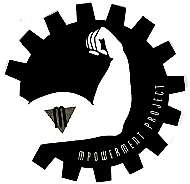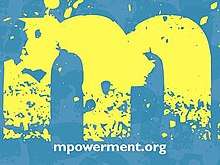The Mpowerment Project

The Mpowerment Project[1] is a model community building and HIV prevention program that has been designed specifically to address the needs of young gay/bisexual men ages 18 – 29. It is the first documented HIV prevention intervention for young gay/bisexual men to succeed in reducing sexual risk behavior.[2] The program has been carefully developed, evaluated and continually refined over the course of 15 years by prominent behavioral scientists from the University of California, San Francisco's Center for AIDS Prevention Studies, the largest research center in the world dedicated to social, behavioral and policy science approaches to HIV.
In 1999, it was one of the first programs to be included in the Center for Disease Control and Prevention's Compendium of HIV Prevention Interventions with Evidence of Effectiveness.[3] It is the only program included that is designed specifically to address the HIV Prevention needs of young gay/bisexual men and other young men who have sex with men (MSM).
History
Recognizing the critical need for HIV prevention programs for young gay/bisexual men, Dr. Susan Kegeles and Dr. Robert Hays, research psychologists at the Center for AIDS Prevention Studies (CAPS) at the University of California, San Francisco, applied for funding to the National Institute of Mental Health (NIMH) to design, implement, and evaluate a community-level HIV prevention program for young gay/bisexual men. Their five-year grant was awarded in 1990.

They pilot tested the program in Santa Cruz, CA. Based on encouraging results there, they refined the program and implemented it in a second community (Eugene, OR), where it was named the Mpowerment Project. Following the program's success in Eugene, it was replicated in Santa Barbara, CA. In 1995 Drs. Kegeles and Hays received a second five-year grant form the NIMH to further develop the program for use in major metropolitan areas across the U.S. Dr. Greg Rebchook, a research psychologist who had worked at a department of public health and at a community-based organization, joined the team in 1996. This new grant enabled them to implement the Mpowerment Project in Albuquerque, NM – where the project was called MPower (1997–1998); and in Austin, TX – where the project was called Austin Men's Project / AMP (1999–2000).[4] Since 2002, numerous organizations have implemented the program with varying success.[5][6][7][8][9][10][11][12]
The Mpowerment Project is cost-effective compared with many other HIV prevention strategies. The cost per HIV infection prevented is far less than the lifetime medical costs of HIV disease.[13] In 2005 the RAND Corporation developed a mathematical model of the cost of a wide variety of HIV prevention interventions. The Mpowerment Project is listed as the most cost-effective intervention.[14]
The Mpowerment manual was released in 2002 and updated in 2010.[15] The individually bound modules cover the following program components:
- Module 1: Overview
- Module 2: Community Assessment – Knowing your community
- Module 3: Implementing Agency
- Module 4: Coordinators
- Module 5: Core Group & Volunteers
- Module 6: Project Space
- Module 7: Formal Outreach – Social outreach events and outreach team
- Module 8: Informal Outreach
- Module 9: M-Groups
- Module 10: Publicizing the Mpowerment Project
- Module 11: The Community Advisory Board
- Module 12: Monitoring and Evaluation
- Module 13: M-Group Facilitator’s Guide
- Module 14: M-Group Meeting Guide
Group Structure
The project is made up of three levels of participants: the core group, volunteers, and the community advisory board.
The core group consists of 10-15 members who represent the demographics of that particular project's local community. These members oftentimes change according to shifts in the community's population.
Volunteers are those who cannot devote as much time to the core group, but would still like to contribute. Volunteers are what help the program be as cost effective as it is.
Finally, a community advisory board is available for the core group and volunteers. Consisting of older members of the LGBT community, the community advisory board provide relevant advice for the groups who usually consist of LGBT youth.[16]
Mpowerment Projects in the United States
Alabama
- Birmingham - MPowerment
Alaska
- Anchorage – AMP Anchorage Men's Project
California
- San Diego – MPowerSD
- San Diego – In The Mix
- San Francisco - BRIDGEMEN
Florida
- Ft. Lauderdale – M Project
- Wilton Manors - SOMOS - Latinos Salud
- Orlando - The Gathering Center
Georgia
Idaho
Illinois
- Champaign-Urbana – Mpowerment CU
- Charleston-Mattoon - Mpowerment Charleston-Mattoon
Indiana
- Bloomington – IlluMENate
Iowa
- Iowa City – Mpowerment Iowa City
Louisiana
- Lafayette – FM Project
- New Orleans – reVision, ME + U
Michigan
Minnesota
Missouri
New Jersey
- Trenton – E=MC2: Empowering Men 2 Create Change
- Camden - Project K.I.S. Keeping It Safe
New Mexico
- Albuquerque – N'MPower
New York
North Carolina
Ohio
Oregon
Pennsylvania
- Harrisburg/Lancaster, Pa - Mpower Pa
South Carolina
- Charleston - CHAMP CHarleston Area Mpowerment Project
Texas
Utah
- Salt Lake City – The Village
Vermont
- Brattleboro – The Men's Program
- Burlington – GLAM www.GLAMvt.org
Washington
- Olympia - Mpowerment Olympia
- Seattle – The MPowerment Project
- Spokane - Inland Northwest Men's Experience (INMx)
West Virginia
See also
References
- ↑ Kegeles, S.M., Rebchook, G., Zovod, B., Tebbetts, S., Sweeney, D., The Mpowerment Project Manual, University of California San Francisco (2002)
- ↑ Kegeles, S.M., Hayes, R. B., & Coates. T.M. (1996) The Mpowerment Project: A community-level HIV prevention internvetion for young gay men. American Journal of Public Health, 86(8), II29-II36.
- ↑ "Compendium of HIV Prevention Interventions with Evidence of Effectiveness". Archived from the original on 2008-03-08. Retrieved 2008-02-07.
- ↑ Kegeles, S.M., Hays, R.B., Pllack, L. M. & Coates, T.J. (1999). Mobilizing young gay and bisexual men for HIV prevention: a two-community study. AIDS, I3(I3), 1753–1762.
- ↑ "The Mpowerment Project: New Location, Same Mission". Retrieved 2010-11-10.
- ↑ "Program takes up fight against AIDS among young black men". Retrieved 2010-04-29.
- ↑ "VIDA/SIDA Launching Innovative New Programs". Retrieved 2010-10-10.
- ↑ "Come Out and Play on M-Day". Retrieved 2009-01-19.
- ↑ "On the radar: Young, black LGBT Detroiters raising profile, building community". Retrieved 2010-08-20.
- ↑ "On the radar: A special place for LGBTQ youth and young adults". Retrieved 2010-08-07.
- ↑ "Vegas MPowerment Project promotes HIV/AIDS awareness among young gay men". Retrieved 2010-03-10.
- ↑ "Mpowerment Detroit to host first-ever Red Tie Affair". Retrieved 2009-02-26.
- ↑ Kahn, J. G., Kegeles, S. M., Hays, R., & Beltzer, N. (2001). Cost-effectiveness of the Mpowerment Project, a community-level intervention for young gay men. Journal of Acquired Immune Deficiency Syndromes (1999), 27(5), 482-491.
- ↑ Cohen DA, Wu S-Y, and Farley TA, “Cost-Effective Allocation of Government Funds to Prevent HIV Infection,” Health Affairs, Vol. 24, No. 4, July/August 2005, pp. 915–926.
- ↑ Kegeles, S.M., Rebchook, G., Hamiga, J. Sweeney, D., Tebbetts.S, Williams.R, Zovod. B, The Mpowerment Project Manual, University of California San Francisco (2010)
- ↑ Hays, R.B., Rebchook, G.M., & Kegeles, S.M. (2003) The Mpowerment Project: Community-Building With Young Gay and Bisexual Men to Prevent HIV. American Journal of Community Psychology, 31, 301-312.
External links
- Official The Mpowerment Project website
- The Center for AIDS Prevention Studies at the University of California San Francisco
- The Mpowerment Project's channel on YouTube
- Effective Interventions.org: Centers for Disease Control Effective Interventions Site
- Rand Corporation.org: "Cost-Effective Allocation of Government Funds for Preventing HIV"